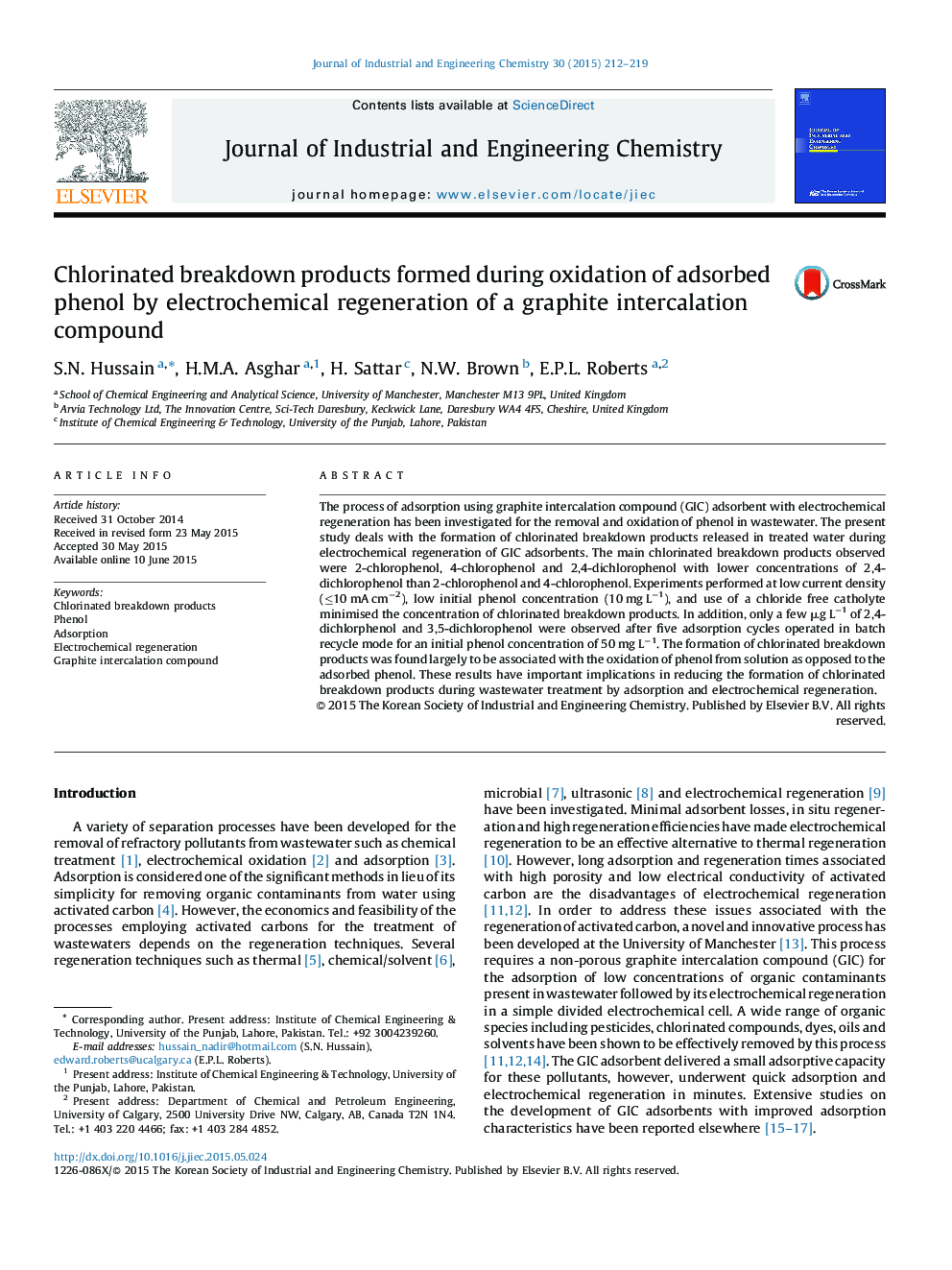| Article ID | Journal | Published Year | Pages | File Type |
|---|---|---|---|---|
| 227159 | Journal of Industrial and Engineering Chemistry | 2015 | 8 Pages |
The process of adsorption using graphite intercalation compound (GIC) adsorbent with electrochemical regeneration has been investigated for the removal and oxidation of phenol in wastewater. The present study deals with the formation of chlorinated breakdown products released in treated water during electrochemical regeneration of GIC adsorbents. The main chlorinated breakdown products observed were 2-chlorophenol, 4-chlorophenol and 2,4-dichlorophenol with lower concentrations of 2,4-dichlorophenol than 2-chlorophenol and 4-chlorophenol. Experiments performed at low current density (≤10 mA cm−2), low initial phenol concentration (10 mg L−1), and use of a chloride free catholyte minimised the concentration of chlorinated breakdown products. In addition, only a few μg L−1 of 2,4-dichlorphenol and 3,5-dichlorophenol were observed after five adsorption cycles operated in batch recycle mode for an initial phenol concentration of 50 mg L−1. The formation of chlorinated breakdown products was found largely to be associated with the oxidation of phenol from solution as opposed to the adsorbed phenol. These results have important implications in reducing the formation of chlorinated breakdown products during wastewater treatment by adsorption and electrochemical regeneration.
